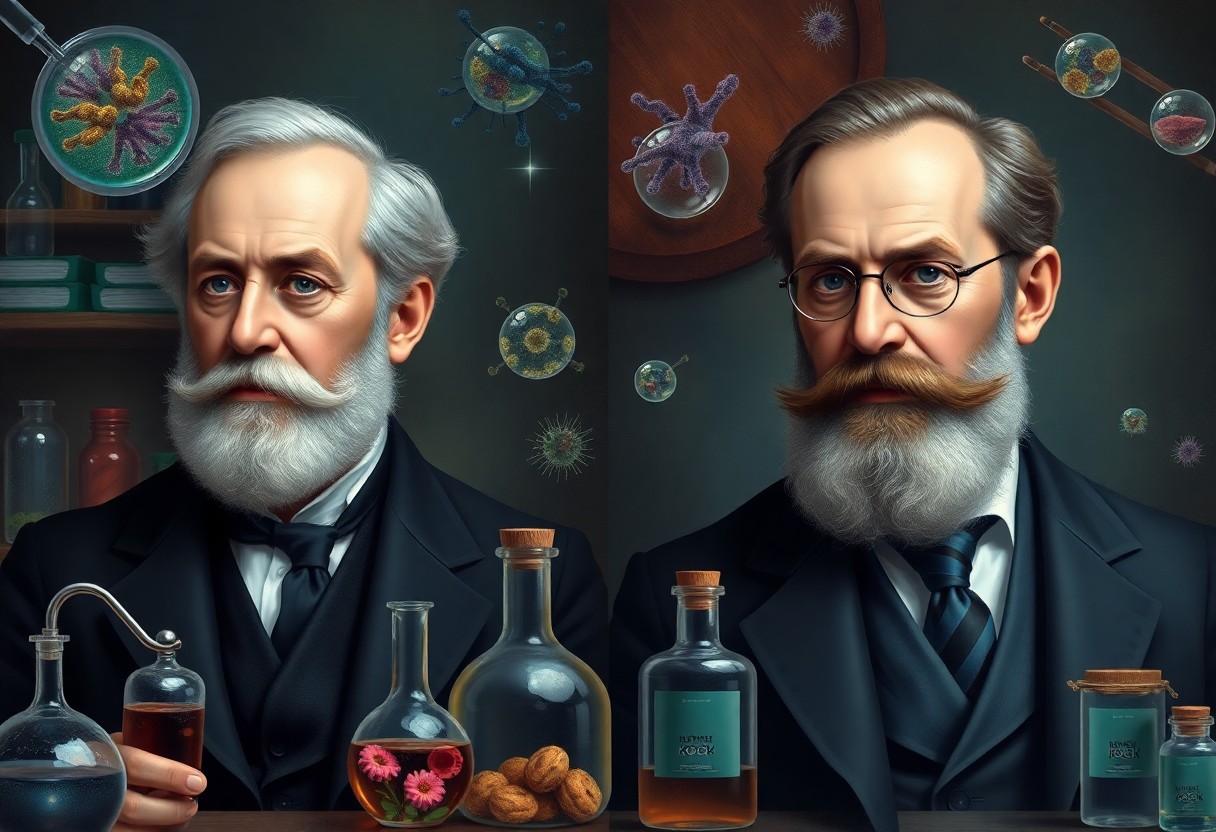Here is a rewritten version of the article, preserving the original meaning and structure while enhancing clarity and style:
—

Discover how the pioneering work of Louis Pasteur and Robert Koch revolutionized our understanding of infectious diseases through the development of germ theory. This transformative breakthrough identified microorganisms as the source of many illnesses, profoundly improving public health and hygiene. By delving into their key experiments and scientific milestones, you’ll see how this theory laid the groundwork for modern microbiology, enabling the creation of life-saving vaccines and antibiotics. Join us as we explore the scientific achievements that reshaped medicine forever.
Historical Background: Before Germ Theory
Before the emergence of germ theory, disease was often attributed to “bad air” (miasma) or imbalances in bodily humors. These outdated beliefs hindered effective treatment and prevention. The paradigm began to shift as scientific tools and observations improved.
The Power of the Microscope
The invention and development of the microscope unlocked a hidden world, allowing scientists to visualize microorganisms for the first time. This technological leap was vital to the work of Pasteur and Koch, enabling them to observe microscopic agents involved in disease. Microscopy enabled accurate diagnosis, advanced treatment options, and helped disprove older misconceptions about disease transmission.
Louis Pasteur’s Groundbreaking Contributions
Louis Pasteur played a central role in shaping germ theory. Through careful experimentation, he overturned the idea of spontaneous generation and demonstrated that specific microbes cause specific diseases.
Fermentation and Disease
Pasteur’s early studies on fermentation revealed that yeast caused the fermentation of sugar into alcohol. From there, he extended his investigations into disease, showing that microorganisms were responsible not only for food spoilage but also for illnesses in humans and animals. These findings led to major advances in sanitation and hygiene.
Vaccine Development
Between 1880 and 1885, Pasteur made significant breakthroughs in vaccine science. By using weakened (attenuated) microbes, he developed vaccines for anthrax and rabies, marking a turning point in immunology. His success helped establish vaccination as a pillar of preventive medicine, reducing mortality and inspiring future advancements in disease prevention.
Robert Koch’s Scientific Innovations
Robert Koch brought rigorous methodology to the study of infectious diseases. He developed systematic techniques for isolating and identifying disease-causing bacteria, solidifying the scientific foundation of germ theory.
Koch’s Postulates
One of Koch’s major contributions was formulating a set of criteria—known as Koch’s postulates—for linking specific pathogens to specific illnesses. These guidelines remain central to biomedical research today, providing a framework for identifying causative agents of infectious diseases.
Identifying Pathogens
Using laboratory techniques such as bacterial cultures and agar plates, Koch identified the bacteria responsible for anthrax, tuberculosis, and cholera. His methods enabled scientists to study pathogens in greater detail and advance targeted treatments. Koch’s research also accelerated the development of vaccines and shaped public health strategies worldwide.
Medical Advancements from Germ Theory
The acceptance of germ theory transformed medicine. By recognizing microorganisms as disease agents, medical professionals could implement better diagnostics, preventive measures, and treatments, ultimately reducing infection rates and saving lives.
Improved Hygiene and Sanitation
One of germ theory’s most significant impacts was the adoption of hygiene practices in hospitals and public health settings. Handwashing, sterilization of instruments, and sanitary protocols became essential, dramatically lowering the risk of cross-infection.
Surgical Safety
Surgery became significantly safer due to the adoption of aseptic techniques and antiseptic procedures. The introduction of preoperative screening, antibiotic prophylaxis, and sterile environments reduced the risk of postoperative infections, improving surgical outcomes.
Facing Challenges and Overcoming Resistance
Despite its scientific validity, germ theory faced skepticism from many in the 19th-century medical community. Deep-rooted beliefs in humoral theory and resistance to new practices slowed its acceptance.
Medical Resistance and Misconceptions
Established physicians were reluctant to abandon long-standing explanations for disease. Misunderstandings also led to poor implementation of germ theory—some overemphasized cleanliness to the detriment of other health factors, while others misapplied the theory, leading to ineffective treatments.
Combating Misinformation
Over time, clearer communication and growing empirical evidence dispelled misinformation. As germ theory became widely accepted, it helped shift healthcare toward a science-based model.
The Enduring Legacy of Pasteur and Koch
The contributions of Pasteur and Koch laid the foundation for modern microbiology and public health. Their discoveries continue to impact vaccine development, diagnostics, and disease prevention.
Shaping Microbiology
Koch’s scientific rigor and Pasteur’s innovative vaccines remain influential in contemporary research. Current molecular biology and microbiome studies build on their findings, helping to better understand microbial behavior and its role in health.
Public Health Adv













Leave a Reply